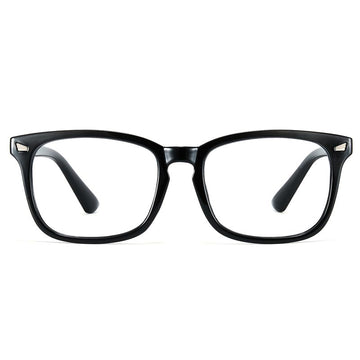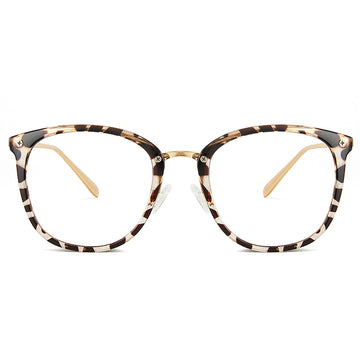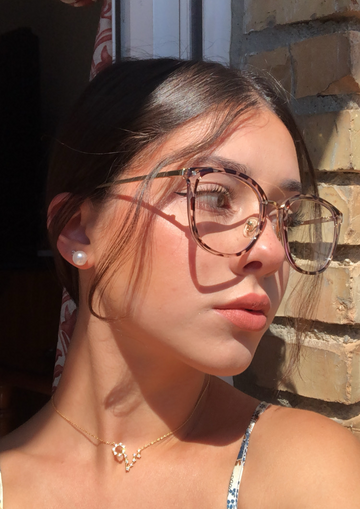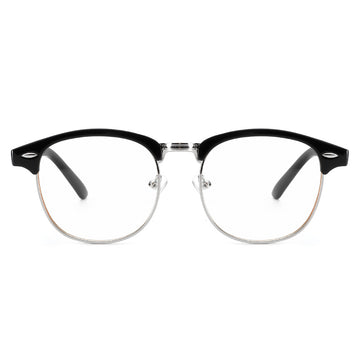WHAT BLUE LIGHT GLASSES ARE BEST?
The popularity of blue light glasses has trended upwards and continues to gain interest from health conscious people. In the ocean of blue light blocking glasses available how can you tell which ones are blocking the correct frequencies of blue and green light? Often you are left to ponder over the mixed messages and reports on the company websites and often take the word of someone telling you the blocking capability of their lenses.
This article is going to take the guess work out of your decision making process as we have run test results through a spectrometer and are going to share them with you here. This article will also be added to over the weeks, months and years when we obtain more company's blue-blockers glasses and test them. We have started with blue light blocking glasses available in Australia but all of these brands ship worldwide and some are larger in the USA.
Its about time the consumer gets the information they need to make the most optimal purchase and not waste their money on useless blue light glasses. But first lets recap what the academic literature says are the light frequencies we need to block after dark.
Academic Studies - What do they prove we should be blocking?
There are many studies out there showing the damaging effects of blue light (1,2,3). This is proven without a doubt that 100% of blue light across the 400-495nm range suppresses melatonin and must be 100% blocked after dark.
The benchmark and flag ship study that we should be taking note of is below.
In 2001 a vital study was released entitled "Action Spectrum for Melatonin Regulation in Humans: Evidence for a Novel Circadian Photoreceptor" (1). Single handedly this is the most important study to read when it comes to understanding what frequencies of blue and green light to block.
The graph below shows the relative quantum sensitivity of the light spectrum to humans after dark. So when you buy blue light glasses that only block blue light or not even all blue light you can now see this is not optimal and you should avoid these if you are searching for the most optimal protection after dark, these are often characterised by yellow, amber or clear lenses, but as are results will show later, even red lenses may not be enough with some brands.

The blue spectrum of light runs from 400-495nm and the green spectrum runs from 500-570nm.
Key takeaways from the study:
- 446–477nm was identified as having the strongest effect on melatonin suppression. You need to make sure 100% from 446-477nm is blocked after dark
- Polychromatic action spectra were reasonably consistent in indicating that the spectral region between 450 and 550nm provides the strongest stimulation of circadian and neuroendocrine responses. What this means is the wavelengths of light between 400-550nm should be completely blocked for optimal melatonin secretion after dark.
- Past studies have shown that the peak wavelength sensitivity was 555nm (Rodieck, 1998). Previous data (Brainard et al, 2001) and those presented in the 2001 study do not support this hypothesis. The results clearly demonstrate that 555nm is significantly weaker in suppressing melatonin.
This is a great study for determining the optimal range of artificial light to block after dark and the study results and graph clearly suggests that the major disruption zone for melatonin is between 400-550nm with a peak between 446-477nm.
After 550nm (upper green and into yellow, amber and red wavelengths) the effect on melatonin becomes almost non-existent and not a major contributor to melatonin suppression. Blocking artificial light past 550nm, based on the conclusions and results presented in this study would be unnecessary, and in our modern world we want optimal along with the ability to function in society. Darker tints that block more than necessary only impair vision, become impracticable, a safety hazard and are not needed as shown in the scientific literature. These are common complaints we hear from people who use Eyewear from companies such as TrueDark.
The Test!
The above has given us a benchmark to measure blue light glasses against. We need to be blocking 100% of blue and green light from 400nm to 550nm to get the most optimal lens to be healthy.
We have tested the lenses for leading blue light glasses companies using a laboratory grade spectrometer. In order to get accurate test results we have tested the glasses outside in full spectrum solar noon sunlight. We have not tested them indoors as the spectrum from LED bulbs is not complete and would yield inaccurate results. Indoor light sources also differ from bulb to bulb so we need full spectrum light to make the test accurate The tests were performed five times per lens and an average reading taken. We will round test results up or down so we aren't dealing with lots of decimal places, this makes for easier reading and digestion.
We will also test the claims made by each brand.
Before we start the test here is the spectrum report for sunlight around the time the blue light glasses were tested, from our spectrometer.

As you can see all frequencies of light are present, balanced and available to be blocked by the lenses we are about to test.
The Results
Company -Block Blue Light (BlueBlockers.co)
Website - https://www.blockbluelight.com.au
Glasses Tested - "Style Premium"
Price - AU$69.99
Company Claims:
"These are our premium range glasses which feature our custom designed blue blocking lens. The lenses are dark amber and block all blue light from 380-500nm and all green light from 500-530nm from electronic devises without distorting your vision.
This is much more superior lens compared to other common Blue Light Blocking Glasses which do not block enough of the blue / green wave lengths or even disclose what wavelengths are being blocked, this makes our product more much more effective at reducing the harmful effects of blue light and improving your sleep."
Image of Glasses Tested

Spectrum Report

Blue and Green Light Actually Blocked
|
% Blue Light Blocked (400-495nm) |
98% |
|
% Green Light Blocked (500- 550nm) |
83% |
Block Blue Lights claims that their premium glasses block 100% of blue light seem false. there is a very visible spike at the most energetic part of the blue spectrum as you can see from the spectrum analyser graph. With this amount of blue coming through at this high an energy level is very detrimental to melatonin production after dark. This company also claims that the blue blight glasses block 100% from 500-530nm in the green range when in fact their lenses only block 94% in this range.
Company - OptimOz
Website - https://www.optimoz.com.au
Glasses Tested - UVEX Blue Light Blocker Glasses
Price - AU$22.00
Company Claims:
98% of blue light blocked.
Image of Glasses Tested

Spectrum Report

Blue and Green Light Actually Blocked
|
% Blue Light Blocked (400-495nm) |
98% |
|
% Green Light Blocked (500- 550nm) |
88% |
OptimOz claims their UVEX glasses (sold by other vendors as well) block 98% of blue light. Those claims are 100% accurate and our test result showed a 98% blocking capability.
However, the amount of melatonin suppressing green light passing through is very high at 12%, with UVEX only blocking 88% of the green light that the literature clearly shows blocks the production on melatonin.
UVEX does not lie on their website and they are very open, but only about the blue spectrum, and even then they do not block 100% of blue light which is of major concern after dark.
Company - Swanwick Sleep (aka Swannies)
Website - https://www.swanwicksleep.com
Glasses Tested - Classic Night Swannies
Price - AU$69.00
Company Claims:
No claims on the website to what frequencies of light Swannies block.
Image of Glasses Tested

Spectrum Report

Blue and Green Light Actually Blocked
|
% Blue Light Blocked (400-495nm) |
99% |
|
% Green Light Blocked (500- 550nm) |
87% |
The results for Swannies surprised us somewhat as we had heard they let in more blue light than this. 99% is a solid effort but still not optimal. The problem, as with most blue blockers, comes post 500nm where only 87% of the green light to 550nm is blocked.
Company - Rhythm Optics
Website - https://rhythmoptics.com
Glasses Tested - The Lucent
Price - AU$119.95
Company Claims:
"Our After Sundown collection uses our Mito500 lens. It has been developed to block 100% of the harmful ultraviolet, violet and the blue light spectrum. At 490nm, the peak of Blue Light Spectrum it transmits 0.00% of visible light. At 500nm it transmits 0.10%. At 510nm it transmits 0.28%. At 530nm it transmits 4.39%. At 540nm it transmits 19.94%.And by 550nm it transmits 44.7% of the visible light spectrum. So it not only blocks out all blue light, it also filters out of the lower half of green light. It then tapers off allowing yellow, orange and red through."
Image of Glasses Tested

Spectrum Report

Blue and Green Light Actually Blocked
|
% Blue Light Blocked (400-495nm) |
100% |
|
% Green Light Blocked (500- 550nm) |
84% |
The results for Rhythm Optics are unsurprising as they share their lens report on their website They performed slightly better than Swannies in the test by blocking 100% of blue light . However, the problem area is far too much green light coming through in the 500-550nm range. To be fair they are very open about this but nonetheless the literature shows they would perform sub-optimally at allowing melatonin to be secreted after dark so you'd be best looking for a pair that blocks 100% across 400-550nm.
Our test actually yielded slightly different results in some frequencies than Rhythm Optics own spectrum report as follows. But given the very small difference with confirms our testing equipment is on the money:
- Claimed to block 95.61% at 530nm (our test showed 96.4% blocked)
- Claimed to block 80.06% at 540nm (our test showed 85.27% blocked)
- Claimed to block 55.30% at 550nm (our test showed 54.94% blocked)
All in all they performed as promised on the website but would not be optimal for the reasons stated above.
GS&GM
Company - GS&GM
Website - https://www.amazon.com.au/
Glasses Tested - Amber Lenses
Price - AU$18.99
Company Claims:
"100% blue light blocking glasses"
Image of Glasses Tested

Spectrum Report

Blue and Green Light Actually Blocked
|
% Blue Light Blocked (400-495nm) |
96% |
|
% Green Light Blocked (500- 550nm) |
83% |
GS&GM claim their amber lenses block 100% of blue light. They actually performed the worst in the tests of the amber and red lenses and only blocked 96% of blue light. The green was also the worst at only 83% blocked up to 550nm. Avoid these like the plague!
Company - BLUblox
Website - https://www.blublox.com
Glasses Tested - Wayfarer Sleep+
Price - $149.95
Company Claims:
better sleep
Image of Glasses Tested

Spectrum Report

Blue and Green Light Actually Blocked
|
% Blue Light Blocked (400-495nm) |
83% |
|
% Green Light Blocked (500- 550nm) |
26% |
We think the results make it pretty clear these are NOT "sleep" glasses right!? You may as well not wear anything after dark than wear BLUblox.

Company - Cyxus
Website - https://www.cyxus.com
Glasses Tested - Cyxus Anti Blue Light Filter
Price - $29
Company Claims:
100% of blue and green light blocked from 400-550nm
Image of Glasses Tested

Spectrum Report

Blue and Green Light Actually Blocked
|
% Blue Light Blocked (400-495nm) |
100% |
|
% Green Light Blocked (500- 550nm) |
100% |
Cyxus claims that 100% of blue and green light is blocked between 400-550nm. The spectrograph above proves this. Even past 550nm the sleep+ lenses filter down the remaining green up to 570nm.
At the beginning of the article the data shows that you need to block 100% of blue and green light to 550nm for melatonin secretion to be optimal and Cyxus Sleep+ lenses do just that.
Rankings
Below is a summary of the results and rankings from best to worst performers in our spectrum tests. This will continually be added to once we test more glasses.
|
Rank |
Company |
Blue Blocked |
Green Blocked (to 550nm) |
|
1 |
100% |
100% |
|
|
2 |
Rhythm Optics |
100% |
84% |
|
3 |
Swannies |
99% |
87% |
|
4 |
UVEX |
98% |
88% |
|
5 |
Block Blue Light |
98% |
83% |
|
6 |
GS&GM |
96% |
83% |
|
7 |
BLUblox |
83% |
26% |
Concluding Statements
It has become very clear from the literature that one must be blocking 100% of blue and green light to 550nm in order to optimally secrete melatonin after dark. Failing to do so will yield sub-optimal sleep, less antioxidant production and mitochondria damage.
It has also become clear from these tests results that many companies are being over generous when interpreting their test results and often misleading the consumer.
If you are looking to buy blue light glasses or upgrade from the ones you already have (if they fall outside 100% blue and green blocking - 400-550nm) make sure a lens test report is shown to you before you hand over your money. Failure to do this will 99 times out of 100 lead to you throwing away your money.
We plan to test every single pair of blue light glasses available on the market for after dark use. If you have a pair you'd like to lend us to test and include in the report please reach out to us at website@cyxus.com.











